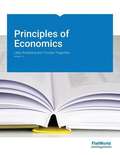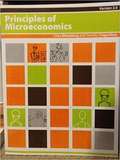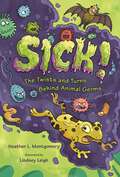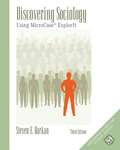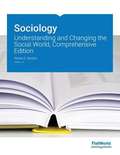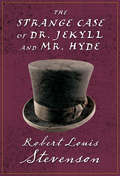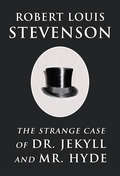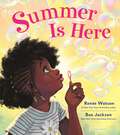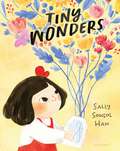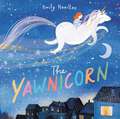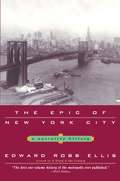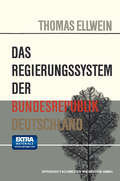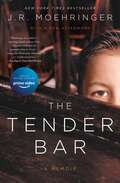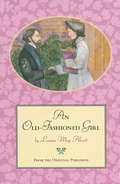- Table View
- List View
The Power of Selling
by Kim RichmondThe Power of Selling is the perfect textbook to teach students about the proven process of selling. More important, it teaches students how to apply the tenets of selling to how to sell themselves and get the job they want, with the same process professional sales people learn (or brush up) on their own selling skills. What makes someone successful in sales? Are great sales people born or made? Is there one magic selling process, or does the process change based on the business...or the customer? How can the selling process really come alive for students in the classroom? How do students learn how to sell for life, not just for a course? The Power of Selling by Kim Richmond answers these questions and makes the principles of selling come alive. Kim looks at the topic of selling through a different lens, and provides inspiration and ideas. The Power of Selling provides an exciting and interactive experience for both professors and students through the use of 4 unique elements: 1. Content The content is based on the core selling tenets so instructors will find the familiar principles of selling. In addition, the impact of Sales 2.0 is addressed at every stage including how to use interactive tools such as Twitter, LinkedIn, Facebook, blogs, and wikis effectively. 2. Selling U The last section of each chapter is called Selling U. It applies the concepts covered in the chapter to a student's job search. Selling U topics include how to think about yourself as a brand, how to create a powerful cover letter and resume, how to create your personal elevator pitch, how to use networking and informational interviews to get the word out about your brand, how to prepare and dress for an interview, and how to negotiate and accept the right job offer. What makes The Power of Selling different is that Selling U is integrated into every chapter, which makes this text the ultimate guide to selling yourself. 3. Video Resources Videos are used throughout the book. Additional videos that are not included in the text are available for instructor use. Here are videos that are available: * Video Ride-alongs - One of the best ways to learn about sales is by going on ride-alongs. So every chapter starts with an exclusive feature called a Video Ride-along. These short videos feature seven different sales professionals - one that starts each chapter. Each one talks about how he or she applies one of the key concepts covered in the chapter in their job. These videos are designed to be "virtual ride-alongs" so the students can actually feel as though they are getting insights first hand from selling professionals. * The Power of Selling YouTube Channel here (youtube.com/thepowerofselling) - Over 50 videos are included featuring the sales professionals who are highlighted in the Video Ride-alongs. About half of the videos are used in the textbook. The balance are available for instructor use. Several are included in Video Learning Segments (see below). These videos are excellent resources for use in the classroom, exercises, and assignments. * Video Learning Segments In addition to the traditional supplements of Instructor Manual, PowerPoints, and Test Bank, there are also Video Learning Segments. These are PowerPoint slides embedded with videos designed to supplement the course PowerPoints and focus on one concept, like an ethical dilemma, pre-call preparation, or effective presentations, how to use email effectively. Each segment includes slides, videos, discussion questions, or exercises. 4. The Power of Selling LinkedIn Group. here This group was created on LinkedIn.com expressly as a resource for the faculty and students who use this textbook. The group includes sales professionals from across the country and from different industries. This is a great tool for faculty and students alike to network, participate in discussions, ask questions, and connect with "real world" selling professionals.
Principles of Economics v 1.1
by Libby Rittenberg Timothy TregarthenVersion 1.1 boasts improved coverage throughout the text including significant updates to: Chapters 20 (GDP, Price Level Changes, Business Cycles, and Unemployment) Chapter 21 (Measuring Total Output and Income) Chapter 27 (Government and Fiscal Policy) Chapter 32 (Macroeconomics for the 21st Century).
Principles of Economics Version 2.0
by Libby Rittenberg Timothy TregarthenIn the macro chapters of Version 2.0 of Principles of Economics thoroughly incorporates the recent recession and recovery-- placing it in historical and theoretical context and not shying away from the controversies surrounding how government responded to it. In the micro chapters, all the time-sensitive data has been updated, along with over half of all the "Start Ups" and "Case and Point" applications being brand new or updated. Flat World Knowledge is thrilled to publish a re-launch of Tim Tregarthen's acclaimed Principles of Economics V. 2.0 book, and proud to bring Tim's remarkable talents as a teacher to future generations of students.
Principles of Macroeconomics
by Libby Rittenberg Timothy TregarthenFlat World Knowledge is honored to publish a new, first edition re-launch of Tim Tregarthen's wonderful principles of macroeconomics book, and proud to bring Tim's incredible talents as a teacher back to life so future generations of students can continue to learn from him. In 1996, he published the first edition of his principles of microeconomics textbook to great acclaim, and it became widely used in colleges around the country. That same year, MS made him wheelchair-bound. The disease forced his retirement from teaching at the University of Colorado at Colorado Springs in 1998. He lost the use of his arms in 2001 and has been quadriplegic ever since. Tim never let his disease get him down. In fact, he turned back to his love of writing and teaching for inspiration. He obtained a voice-activated computer, recruited a co-author, Libby Rittenberg of Colorado College, and turned his attention to revising his principles of economics book. Today we are excited to introduce Libby Rittenberg and Timothy Tregarthen's Principles of Macroeconomics. The authors teach economics as the study of "choice " by providing students with an accessible, straightforward overview of economics. This text combines the clarity and writing of Tregarthen's seminal periodical "The Margin" with great teaching insights. Rittenberg and Tregarthen help students to understand how real individuals actually work with economics. In this new book, the authors illustrate the practicality and relevance of economics with a variety of new illustrations and insights. The authors take a three-pronged approach to every concept: (1) the concept is covered with a "Heads Up" to ward off confusion, (2) a "You Try It" section makes sure students are staying on top of the concept and (3) a "Case and Point" section that uses a real-world application to harness the concept in reality. For one example of how this plays out in the text see "Chapter 3, Section 2 on Supply".here This book is intended for a one-semester course in Macroeconomics taught out the social sciences or business school.
Principles of Management
by Mason Carpenter Talya Bauer Berrin ErdoganPrinciples of Management by Carpenter, Bauer and Erdogan teaches management principles to tomorrow's business leaders by weaving three threads through every chapter: strategy, entrepreneurship and active leadership. Strategic: All business school teachings have some orientation toward performance and strategy and are concerned with making choices that lead to high performance. Principles of Management will frame performance using the notion of the triple bottom-line the idea that economic performance allows individuals and organizations to perform positively in social and environmental ways as well. The triple bottom line is financial, social, and environmental performance. It is important for all students to understand the interdependence of these three facets of organizational performance. The Entrepreneurial Manager: While the General Management course at Harvard Business School was historically one of its most popular and impactful courses (pioneered in the 1960s by Joe Bower), recent Harvard MBAs did not see themselves as general managers. This course was relabeled 'The Entrepreneurial Manager' in 2006, and has regained its title as one of the most popular courses. This reflects and underlying and growing trend that students, including the undergraduates this book targets, can see themselves as entrepreneurs and active change agents, but not just as managers. By starting fresh with an entrepreneurial/change management orientation, this text provides an exciting perspective on the art of management that students can relate to. At the same time, this perspective is as relevant to existing for-profit organizations (in the form intrapreneurship) as it is to not-for-profits and new entrepreneurial ventures. Active Leadership: Starting with the opening chapter, Principles of Management show students how leaders and leadership are essential to personal and organizational effectiveness and effective organizational change. Students are increasingly active as leaders at an early age, and are sometimes painfully aware of the leadership failings they see in public and private organizations. It is the leader and leadership that combine the principles of management (the artist's palette, tools, and techniques) to create the art of management. Cases: Mason provides brief cases in his Instructors Manual for those who take a case approach to the course or who wish to incorporate cases. This book's modular format easily maps to a POLC course organization (Planning, Organizing, Leading, and Controlling, attributed to Henri Fayol (1949, General and industrial management. London. Pitman Publishing company), and suits the needs of most undergraduate or graduate course in Principles of Management.
Principles of Marketing 2.0
by Mary Anne Raymond Jeff TannerPrinciples of Marketing Version 2.0 by Tanner, Raymond and Schuster teaches the experience and process of actually doing marketing - not just the vocabulary. It carries five dominant themes throughout in order to expose students to marketing in today's environment: Service dominant logic - This textbook employs the term "offering" instead of the more traditional First "P" -- product. That is because consumers don't sacrifice value when alternating between a product and a service. They are evaluating the entire experience, whether they interact with a product, a service, or a combination. So the fundamental focus is providing value throughout the value chain, whether that value chain encompasses a product, service, or both. Sustainability; Increasingly, companies are interested in the impact they are having on their local community as well as the overall environment. This is often referred to as the triple bottom line of financial, social, and environment performance. Ethics and social responsibility; Following on the sustainability notion is the broader importance of ethics and social responsibility in creating successful organizations. The authors make consistent references to ethical situations throughout chapter coverage, and end of chapter material in most chapters will encompass ethical situations. Global coverage -- Tanner, Raymond and Schuster deliberately entitled Chapter 1; What is Marketing?; Whether it is today's price of gasoline, the current U.S. presidential race, or Midwestern U.S. farming, almost every industry and company needs strong global awareness. And today's marketing professionals must understand the world in which they and their companies operate. Metrics -- Firms today have the potential to gather more information than ever before about their current and potential customers. That information gathering can be costly, but it can also be very revealing. With the potential to capture so much more detail about micro transactions, firms should now be more able to answer ;well, what this marketing strategy really worth it?; And what is the marketing ROI?; And finally, what is this customer or set of customers worth to us over their lifetime? Principles of Marketing Version 2.0 brings new and updated coverage of new developments in the influence of social media to empower consumers, as well as marketing's use of social media, such as sentiment analysis, mobile marketing, and customer service and complaint tracking, as a communications and promotion channel, just a name a few. Version 2.0 also has an overall increased number of examples, as well as, new discussion questions in every chapter (resulting in at least 10 per chapter). In addition, the textbook's key terms, and repeated concepts have been strategically arranged to make customizing this book with Flat World's MIYO platform even easier.
Principles of Microeconomics 2.0
by Libby Rittenberg Timothy TregarthenFlat World Knowledge is honored to publish Version 2.0 (an orginal re-launch) of Tim Tregarthen's wonderful principles of microeconomics book, and proud to bring Tim's incredible talents as a teacher back to life so future generations of students can continue to learn from him.
Risk Management for Enterprises and Individuals
by Etti Baranoff Patrick Lee Brockett Yehuda KahaneThis book is intended for the Risk Management and Insurance course where Risk Management is emphasized. When we think of large risks, we often think in terms of natural hazards such as hurricanes, earthquakes or tornados. Perhaps man-made disasters come to mind such as the terrorist attacks in the U.S. on September 11, 2001. Typically we have overlooked financial crises, such as the credit crisis of 2008. However, these types of man-made disasters have the potential to devastate the global marketplace. Losses in multiple trillions of dollars and in much human suffering and insecurity are already being totaled, and the global financial markets are collapsing as never before seen. We can attribute the 2008 collapse to financially risky behavior of a magnitude never before experienced. The 2008 U.S. credit markets were a financial house of cards. A basic lack of risk management (and regulators' inattention or inability to control these overt failures) lay at the heart of the global credit crisis. This crisis started with lack of improperly underwritten mortgages and excessive debt. Companies depend on loans and lines of credit to conduct their routine business. If such credit lines dry up, production slows down and brings the global economy to the brink of deep recession or even depression. The snowballing effect of this failure to manage the risk associated with providing mortgage loans to unqualified home buyers have been profound, indeed. When the mortgages failed because of greater risk- taking on the Street, the entire house of cards collapsed. Probably no other risk-related event has had, and will continue to have, as profound an impact world wide as this risk management failure. How was risk in this situation so badly managed? What could firms and individuals have done to protect themselves? How can government measure such risks (beforehand) to regulate and control them? These and other questions come to mind when we contemplate the consequences of this risk management fiasco. Standard risk management practice would have identified sub-prime mortgages and their bundling into mortgage-backed-securities as high risk. People would have avoided these investments or would have put enough money into reserve to be able to withstand defaults. This did not happen. Accordingly, this book may represent one of the most critical topics of study that the student of the 21st century could ever undertake. Risk management will be a major focal point of business and societal decision making in the 21st century. A separate focused field of study, it draws on core knowledge bases from law, engineering, finance, economics, medicine, psychology, accounting, mathematics, statistics and other fields to create a holistic decision-making framework that is sustainable and value- enhancing. This is the subject of this book.
Sexuality and Our Diversity: Integrating Culture with the Biopsychosocial Version 1.0
by Marcus TyeSexuality and Our Diversity: Integrating Culture with the Biopsychosocial by Marcus Tye explores, with an integrated approach, the complex dimensions of biology, culture, psychology, sociology, history, and philosophy that explain human sexual diversity. While this text is primarily focused on the present, it also explores selected aspects of history to lend perspective to students that contemporary controversies have deep historical roots.
Sick!: The Twists and Turns Behind Animal Germs
by Heather L. MontgomeryWhen a super sickness lands on the land, when a parasite becomes more than a pest, when an infection ignites an epidemic, what's a body to do? Your body is an animal body, so why not ask the animals?Follow the scientists, around the world and into their labs, who are studying animals and the germs that attack them. From fungus-ridden frogs with fevers to bacteria-resistant buzzards and everything in-between, animals have A LOT to teach us about infections. But-reader beware!!-the story of germs is filled with twists and turns.In this fascinating, highly visual nonfiction book packed with colorful, comic-style art, you'll discover not only the cool ways that animal bodies (and our bodies) fight back against pesky pathogens, but also the amazing and surprising ways we can learn to work together with germs.Sick! The Twists and Turns Behind Animal Germs is written by Heather L. Montgomery with graphic novel-style art from Lindsey Leigh.
Sociology
by Steven E. BarkanThis best selling software-based workbook lets students explore dozens of sociological topics and issues, using data from the United States and around the world. With the workbook and accompanying ExplorIt software and data sets, students won't just read about what other sociologists have done, they will discover sociology for themselves. DISCOVERING SOCIOLOGY will add an exciting dimension to the introductory sociology course.
Sociology: Understanding and Changing the Social World
by Steven E. BarkanThe founders of sociology in the United States wanted to make a difference. A central aim of the sociologists of the Chicago school was to use sociological knowledge to achieve social reform. A related aim of sociologists like Jane Addams, W.E.B. DuBois, and Ida B. Wells-Barnett and others since was to use sociological knowledge to understand and alleviate gender, racial, and class inequality. It is no accident that many sociology instructors and students are first drawn to sociology because they want to learn a body of knowledge that could help them make a difference in the world at large. Steve Barkan's Sociology: Understanding and Changing the Social World is designed for this audience. It presents a sociological understanding of society but also a sociological perspective on how to change society, while maintaining the structure and contents of the best mainstream texts.
The Strange Case of Dr. Jekyll and Mr. Hyde
by Robert Louis StevensonRespected scientist Dr. Jekyll develops a potion that transforms him into his alter ego, the depraved Mr. Hyde, who indulges in acts of lust and brutality. Both a page-turner and an exploration of good and evil, The Strange Case of Dr. Jekyll and Mr. Hyde is one of the best-known stories in all of literature. This short novel, first published in 1886, is the definition of a classic.
The Strange Case of Dr. Jekyll and Mr. Hyde
by Robert Louis StevensonRespected scientist Dr. Jekyll develops a potion that transforms him into his alter ego, the depraved Mr. Hyde, who indulges in acts of lust and brutality. Both a page-turner and an exploration of good and evil, The Strange Case of Dr. Jekyll and Mr. Hyde is one of the best-known stories in all of literature. This short novel, first published in 1886, is the definition of a classic.
Summer Is Here
by Ms Renée WatsonNew York Times bestselling creators Renée Watson and Bea Jackson offer a picture book ode to a picture-perfect summer day, from sunrise to sunset.Summer is here!No dark clouds in the sky, it's a perfect day for play. What joy will summer bring me today?Summer is finally here, and she's bringing the most perfect day! From sunup to sundown, there's so much to do on this lovely summer day. With summer comes fresh fruit, sweet and tangy, jump ropes for leaping and dancing, and friends at the pool swimming and floating. Summer brings family cookouts under shady trees, gardens overflowing, and the familiar song of the ice-cream truck. This beautiful ode to all the season's sensations follows one girl's perfect day in an exploration of joy, family, friendship, sunshine, and wonder.Her stars shimmer like spilled glitter across the sky. I whisper a wish and say goodbye to the day.I wish summer would stay.Renée Watson celebrates iconic childhood joys in this love letter to summer featuring bright, sun-drenched art from Bea Jackson.
Survey of Economics Version 1.0
by Libby Rittenberg Timothy TregarthenThis Survey of Economics textbook is intended for the one-semester introductory economics course. Building on the pedagogy developed in their successful two-semester Principles of Economics textbook, Libby and Tregarthen cover topics that will give students the tools to understand the economics way of thinking.
Sustainability, Innovation, and Entrepreneurship
by Andrea LarsonThis book is suited for the Entrepreneurship or Innovation course with an emphasis on Sustainability or for a course devoted entirely to Sustainability. The deep roots of sustainability thinking are now evident in widespread and increasingly visible activities worldwide, this text will help you and your students explore that necessity, its implications and its progression.
Tiny Wonders
by Sally Soweol HanThe world is full of wonders, if we take a small moment to look! A beautiful story about everyday magic.April's town is dull and gray, and the people there are too busy to laugh or look up at the sky. But when April remembers Grandma's stories about wonder in the world, like the secret language of flowers, April wonders: Can dandelions help? Planting tiny seeds while the seasons shift towards spring, April watches as the dandelions and other flowers sprout, bringing more than a little wonder back to her community.Debut author-illustrator Sally Soweol Han's gorgeous and inspirational story encourages young readers to consider how they too can plant a little wonder in the world.
The Yawnicorn
by Emily HamiltonMagic is waiting in this rhythmic, calming tale that is the perfect bedtime story for when little ones struggle to fall asleep!You're tucked into bed, ready for sleep. But . . . your head is all busy. and your legs are all twitchy. And this blanket is so itchy!It's time to call on the Yawnicorn! Tuck in for an enchanting nighttime adventure flying over oceans, marching through jungles, and soaring across glittering galaxies until you find your perfect dreamland. With the Yawnicorn's help, young readers are destined for a night of magical wonder and sweet dreams.Join the Yawnicorn on a bedtime adventure you'll never forget!
The Epic of New York City: A Narrative History
by Edward Robb EllisIn swift, witty chapters that flawlessly capture the pace and character of New York City, acclaimed diarist Edward Robb Ellis presents his masterpiece: a thorough, and thoroughly readable, history of America's largest metropolis. Ellis narrates some of the most significant events of the past three hundred years and more-the Revolutionary and Civil Wars, Alexander Hamilton and Aaron Burr's fatal duel, the formation of the League of Nations, the Great Depression-from the perspective of the city that experienced, and influenced, them all. Throughout, he infuses his account with the strange and delightful anecdotes that a less charming tour guide might omit, from the story of the city's first, block-long subway to that of the blizzard of 1888 that turned Macy's into one big slumber party. Playful yet authoritative, comprehensive yet intimate, The Epic of New York City confirms the words of its own epigraph, spoken by Oswald Spengler: "World history is city history," particularly when that city is the Big Apple.
The Epic of New York City: A Narrative History
by Edward Robb EllisIn swift, witty chapters that flawlessly capture the pace and character of New York City, acclaimed diarist Edward Robb Ellis presents his masterpiece: a thorough, and thoroughly readable, history of America's largest metropolis. Ellis narrates some of the most significant events of the past three hundred years and more -- the Revolutionary and Civil Wars, Alexander Hamilton and Aaron Burr's fatal duel, the formation of the League of Nations, the Great Depression -- from the perspective of the city that experienced, and influenced, them all. Throughout, he infuses his account with the strange and delightful anecdotes that a less charming tour guide might omit, from the story of the city's first, block-long subway to that of the blizzard of 1888 that turned Macy's into one big slumber party. Playful yet authoritative, comprehensive yet intimate, The Epic of New York City confirms the words of its own epigraph, spoken by Oswald Spengler: "World history is city history," particularly when that city is the Big Apple.
Das Regierungssystem der Bundesrepublik Deutschland: Bd 1: Text. Bd 2: Materialien (pdf) (Die Wissenschaft von der Politik)
by Thomas EllweinThe Tender Bar: A Memoir
by J. R. Moehringer**Soon to be a major motion picture, featuring a new afterword by J.R. Moehringer.**The New York Times bestseller and one of the 100 Most Notable Books of 2005. In the tradition of This Boy's Life and The Liar's Club, a raucous, poignant, luminously written memoir about a boy striving to become a man, and his romance with a bar.J.R. Moehringer grew up captivated by a voice. It was the voice of his father, a New York City disc jockey who vanished before J.R. spoke his first word. Sitting on the stoop, pressing an ear to the radio, J.R. would strain to hear in that plummy baritone the secrets of masculinity and identity. Though J.R.'s mother was his world, his rock, he craved something more, something faintly and hauntingly audible only in The Voice.At eight years old, suddenly unable to find The Voice on the radio, J.R. turned in desperation to the bar on the corner, where he found a rousing chorus of new voices. The alphas along the bar--including J.R.'s Uncle Charlie, a Humphrey Bogart look-alike; Colt, a Yogi Bear sound-alike; and Joey D, a softhearted brawler--took J.R. to the beach, to ballgames, and ultimately into their circle. They taught J.R., tended him, and provided a kind of fathering-by-committee. Torn between the stirring example of his mother and the lurid romance of the bar, J.R. tried to forge a self somewhere in the center. But when it was time for J.R. to leave home, the bar became an increasingly seductive sanctuary, a place to return and regroup during his picaresque journeys. Time and again the bar offered shelter from failure, rejection, heartbreak--and eventually from reality.In the grand tradition of landmark memoirs, The Tender Bar is suspenseful, wrenching, and achingly funny. A classic American story of self-invention and escape, of the fierce love between a single mother and an only son, it's also a moving portrait of one boy's struggle to become a man, and an unforgettable depiction of how men remain, at heart, lost boys.
An Old-Fashioned Girl: Large Print
by Louisa May AlcottPolly's friendship with the wealthy Shaws of Boston helps them to build a new life and teaches her the truth about the relationship between happiness and riches.

